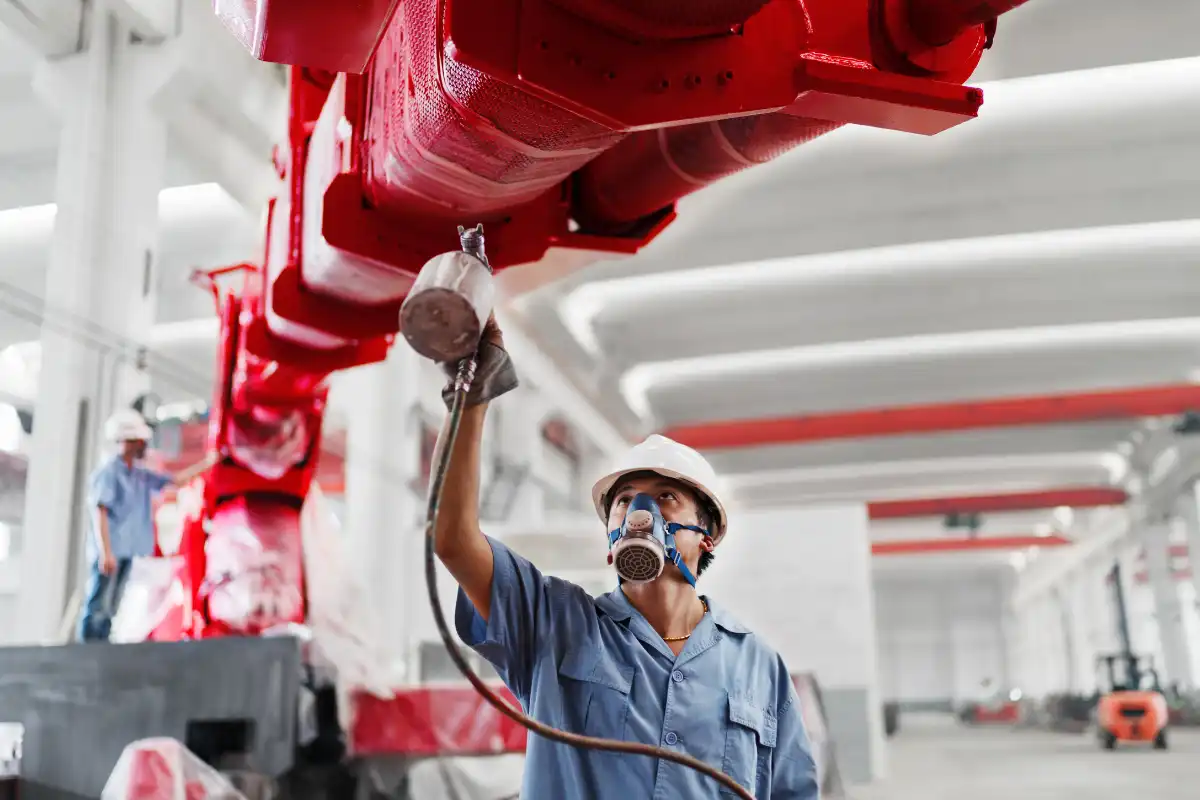
Across industries, unscheduled downtime costs climb quickly. In manufacturing, shutting down the line could mean running an extra shift to catch up. At a construction site, falling behind means having to reschedule deliveries, crews, and inspections. In the office, something as small as a broken monitor can leave a bad impression on key clients during an important meeting. By implementing rotating assets, maintenance teams can make faster repairs while ensuring a high standard of work.
What are rotating assets?
Rotating assets are interchangeable, repairable, or rechargeable assets that the maintenance team can repeatedly move between service and inventory.
So, in a manufacturing setting, there might be a complex system for extracting and filtering welding fumes. Inside the system, there are six identical fans units, each with its own motor and electrical controls. In addition to the six in service, there’s also spare. If any of the fans break down, the team can quickly swap in the one in inventory, ensuring less downtime. They can then send the fan out or repair it in-house.
Rotating assets are unrelated to the practice of rotating inventory or stock, which is when you organize items to avoid waste due to expiration, degradation, or obsolescence. An example of rotating stock is when you put the pack of new batteries behind the ones that are already in the supply closet. The idea is that the older ones should be used first.
How are rotating assets in inventory different from MRO inventory?
Maintenance, repairs, and operations (MRO) inventory is consumable, which means it’s part of the production process but does not appear in the finished product. For example, the grease that keeps the press from seizing is not in the widgets, but a company can’t make widgets without it. It is the same with office cleaning supplies. The people who buy the widgets don’t see them, but the company’s office can’t function without them.
The important difference between rotating assets and MRO inventory is that rotating assets are not consumable. Instead, the maintenance team pulls them out of services, fixes or recharges them, and then puts them back into service or saves them in inventory as spares.
What are the benefits of implementing rotating assets?
Downtime is costly. It interrupts operations and can lead to missed deadlines, reduced productivity, and unhappy customers. By having a system in place to rotate assets, the maintenance team can quickly swap out a piece of equipment that needs servicing or repair, ensuring that operations continue smoothly.
Rotating assets also help the maintenance department control costs and manage time while maintaining a consistently high level of work.
Maintaining maintenance standards
Instead of repairing equipment on-site, which is time-consuming and expensive, the maintenance team can bring it back to central inventory. In this controlled environment, the repair process is more systematic and efficient. Technicians have access to a wider range of tools and spare parts, which can significantly reduce the time and cost associated with on-site repairs. Because the shop has better facilities and conditions, the repairs are more thorough and precise, which extends the lifespan of the equipment, leading to long-term savings.
Optimizing repair scheduling
Centralized repair and maintenance operations allow for better scheduling and resource allocation. Technicians can work on multiple devices in a single session, leading to economies of scale, where the cost per repair is lower. Centralized facilities also often have a more streamlined workflow, reducing the time spent on setup and teardown for each repair. By optimizing the repair schedule, the company can ensure that its technicians are working at maximum capacity, which saves money and improves the overall efficiency of the maintenance process.
Avoiding emergency service calls
Emergency service calls are expensive. When an asset breaks down unexpectedly, maintenance may have to pay premium rates for immediate service. By maintaining rotating assets in the central inventory, the company can instead schedule repairs during regular maintenance hours, when labor costs are more predictable and technicians are more readily available.
What are common use cases for rotating assets?
Although each industry might have different types of rotating assets, the main reasons for having them remain. Being able to quickly swap in a working part reduces downtime. Having more flexibility in scheduling repairs saves money on service fees while also ensuring the maintenance department can maintain a high standard of work.
Manufacturing
A plant with multiple identical CNC machines can benefit from asset rotation. For example, if one machine starts showing signs of wear and tear, the maintenance team can rotate the worn machine out of service and replace it with a spare machine from inventory. The regular rotation and maintenance of these machines also helps them identify and address issues early, preventing major breakdowns and extending the lifespan of the equipment.
The team can maintain the plant’s production while also ensuring the quality of the products remains high, as the machines are always in optimal condition.
Healthcare
If a monitor in the ICU needs to be calibrated and serviced, the hospital can rotate the monitor out of the ICU and replace it with a spare monitor from inventory to ensure patient monitoring continues uninterrupted, maintaining the quality of care. The regular rotation and calibration of these monitors also help in ensuring that all equipment is in the best possible condition, reducing the risk of equipment failure.
Corporate offices
A large corporate office with multiple branches across the country relies heavily on a variety of office equipment, including printers, copiers, computers, and projectors. Over time, some of these devices in the offices with higher occupancy and utilization numbers, for example the main headquarters and regional offices, start to show signs of wear and tear, leading to frequent breakdowns and reduced efficiency. The issues lead to delays in document processing, decreased productivity, and frustration among employees.
The company can set up a central inventory of spare office equipment at their headquarters and regional hubs. Each office location is assigned a rotation schedule based on its usage patterns and the condition of its equipment. When a device in a high-traffic office needs maintenance or repair, the office manager can quickly request a replacement from the central inventory.
For example, the main office, which handles a large volume of printing and copying, has a printer that stops working, so the office manager reports the issue to the central maintenance team, which immediately sends a spare printer. The faulty printer is replaced within 24 hours, ensuring that the office can continue its operations without disruption. Meanwhile, the maintenance team has the broken printer in their main shoo, where they have the space, tools, and time they need to complete a thorough inspection and repair. Once they’ve fixed the printer, it goes back into inventory, until it is needed again.
Accurate, real-time inventory control ensures availability
Successful inventory control — for everything from bulk MRO to specific parts for specialized equipment — depends on smart workflows that automate data capture and sharing. Modern systems support automatic assignments, customizable par levels, and in-depth audits, along with features that enable rotating assets.
Learn how to have the critical parts you need to reduce downtime.





